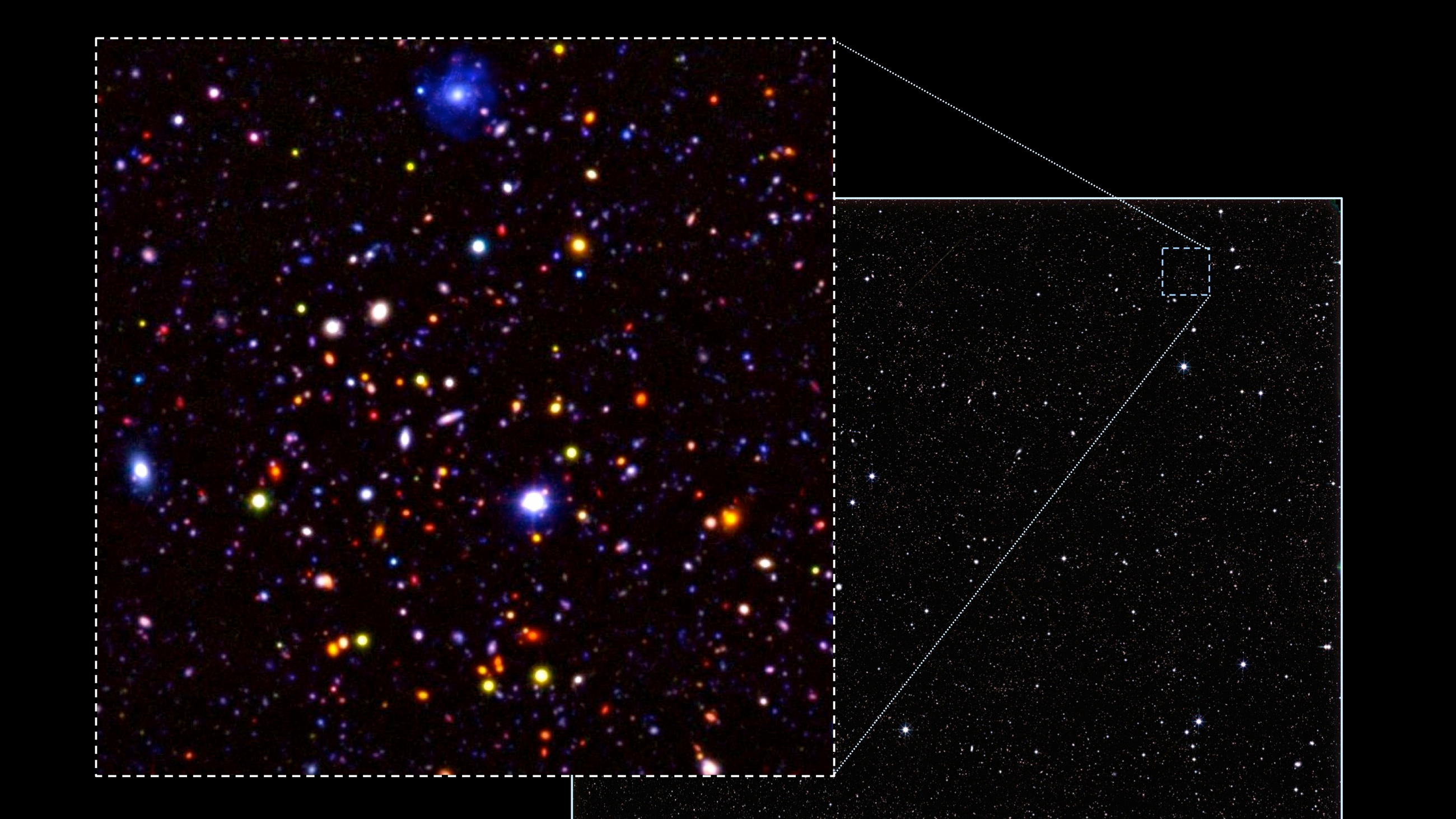Astronomers have published the deepest ever view of the distant Universe
Following 11 years of data collection

In December 1995, astronomers operating the Hubble Space Telescope pointed its powerful lens at nothing whatsoever. They found the darkest area of the sky that they could and imaged it for ten consecutive days to see whether anything was there.
The result was incredible. Rather than nothing, the researchers got an image back of more than 3,000 galaxies - some dating back nearly to the Big Bang.
They called their results the Hubble Deep Field, and it has since become a landmark image in the study of the early Universe.
Since then, there have been several attempts to do a similar thing in other parts of the cosmos. The latest, which has just been released, is called the Ultra-Deep Survey and maps a huge area of the night sky - about four times the size of the full Moon.
By comparison, the original Hubble Deep Field image covered an area the size of a tennis ball held at a distance of 100 metres.
It's the result of more than 11 years of observations from the United Kingdom Infrared Telescope on Hawaii. Over 1000 hours of exposures were knitted together into a single infrared image that shows more than 250,000 galaxies.
Because these galaxies are so far away, the amount of time it takes their light to reach us means that we're seeing them as they appeared in the very earliest days of the Universe.
Get daily insight, inspiration and deals in your inbox
Sign up for breaking news, reviews, opinion, top tech deals, and more.
The results will be used to study how galaxies change over time. "With the Ultra Deep Survey we can study distant galaxies in large numbers, and observe how they evolved at different stages in the history of the Universe," said Omar Almaini, who led the team that published the new image.
"We see most of the galaxies in our image as they were billions of years before the Earth was formed."
Dramatic Transformation
William Hartley, a researcher at University College London, added: "We are particularly keen to understand the dramatic transformation that many massive galaxies underwent around 10 billion years ago.
"At that time many galaxies appear to have abruptly stopped forming stars, and they also changed shape to form spheroidal-looking galaxies. We still don't fully understand why this happens. With our new images we expect to find large numbers of these galaxies, caught in the act of transformation, so we can study them in detail to solve this important puzzle."
If you want to comb through the final images yourself, you can grab them from the team's website - though be warned, they're more than 25,000 pixels on each side. Alternatively, you can zoom through them here.
- Duncan Geere is TechRadar's science writer. Every day he finds the most interesting science news and explains why you should care. You can read more of his stories here, and you can find him on Twitter under the handle @duncangeere.
